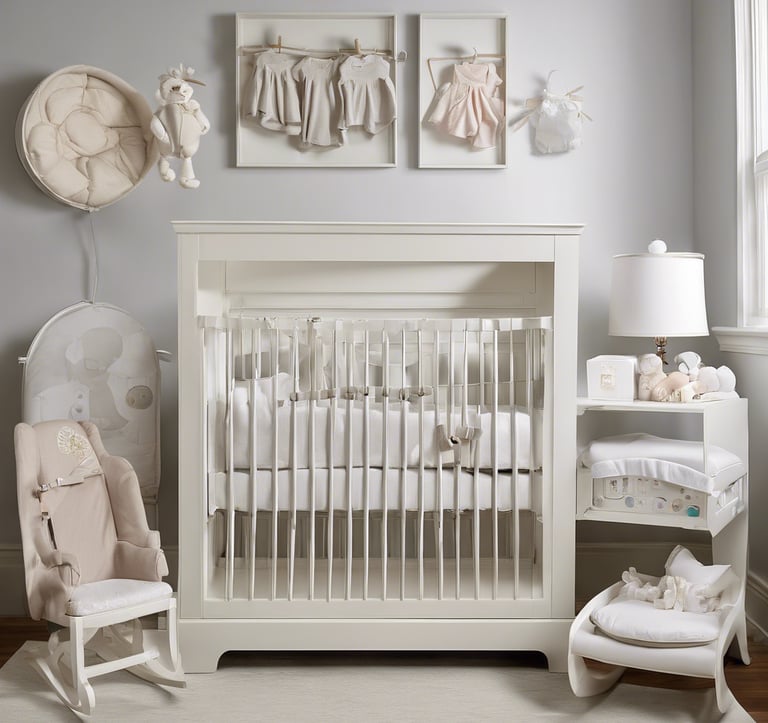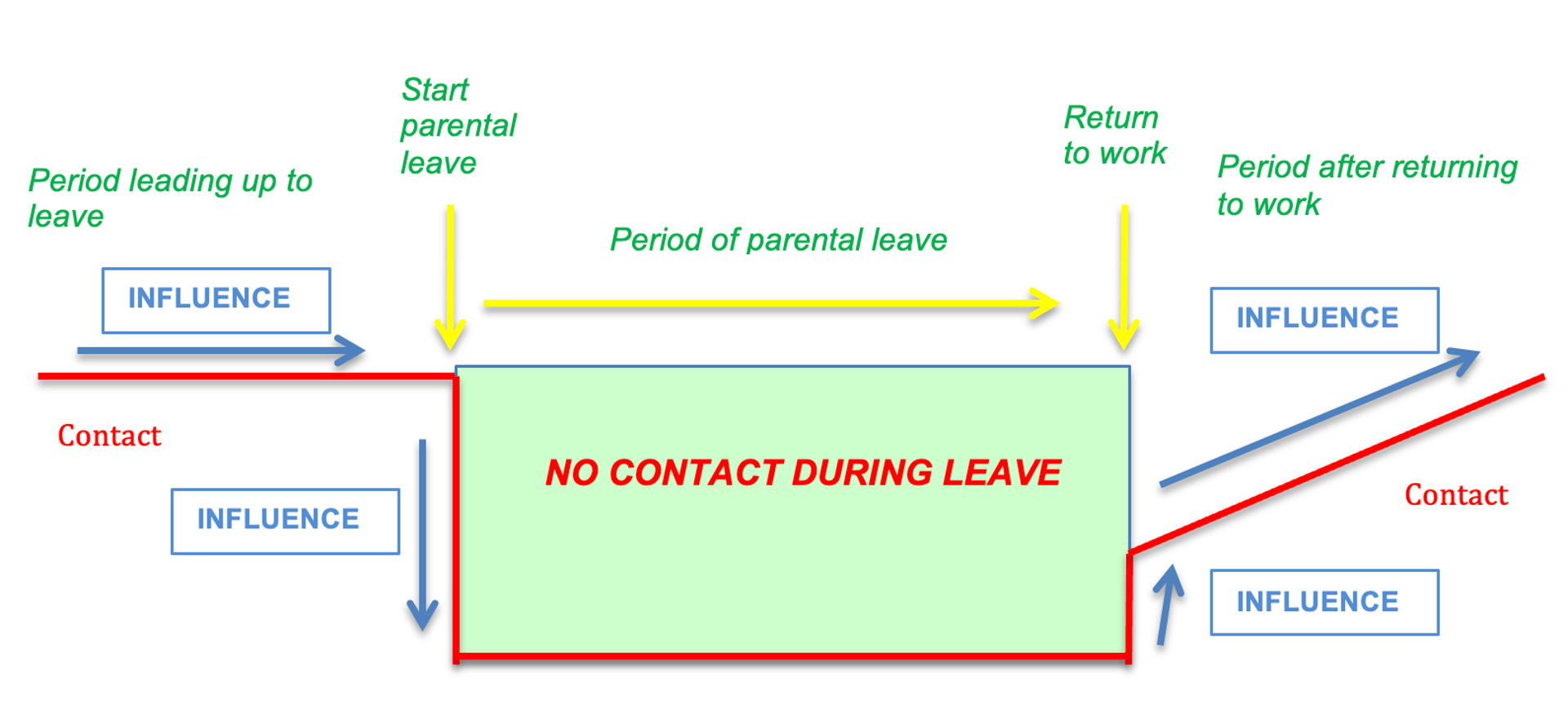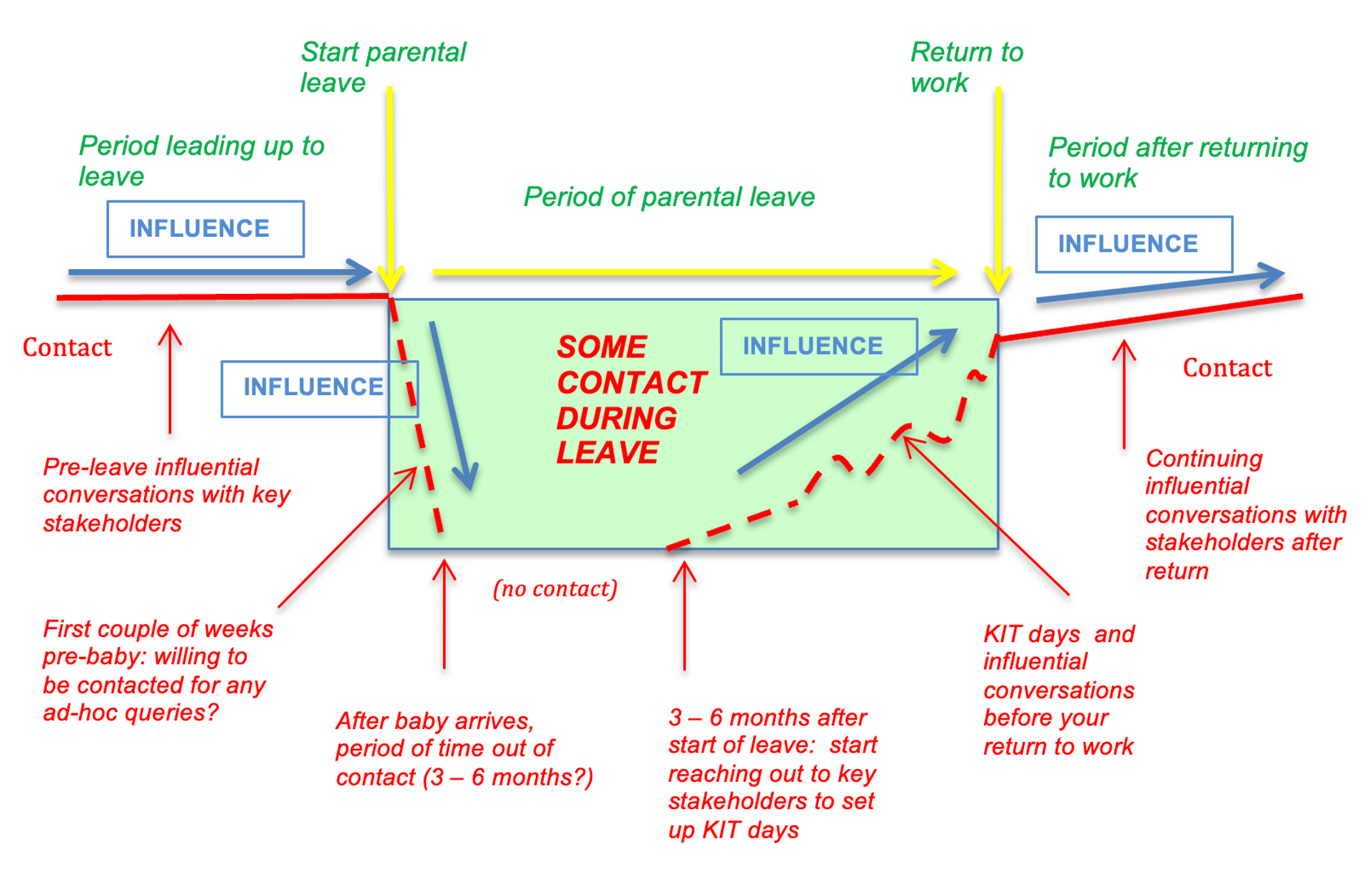Preparing for parental leave - what do you need to consider?
What to consider before going on leave - including how best to use KIT days - that can support you with a smoother return
PARENTAL LEAVE
Rebecca Ford Johnson*
6/11/20244 min read


As you near the date of your baby's arrival, there seem to be endless lists of things to buy or borrow. Have you got a cot, pram, car seat, nappies.... the list goes on! As a result, it might be the case that your departure from work is simply a handover of ongoing matters or projects and a dash out of the door (or logging off the computer).
But it's worth spending some time thinking about what you want your leave to look like, and what conversations you might have before you go that can set you up for a smooth transition back. People often think you're either out of contact with work completely, or checking emails every week. Either one of those might be the choice you make, but it is worth considering that there are other options.
You might have a vague intention to use KIT days but not really know how best to use them. In this context it can be really valuable thinking about the idea of influence: what influence can you have while you're still at work, how is that affected by the level of contact you have while you're on leave, and what impact does that have on your return?
Before thinking about what an alternative might look like, it is worth considering what it looks like if you go on leave and then don't have any contact at all until your return. Diagrammatically it might look like this:

In this example, the green area represents your period of parental leave, and the red line represents your contact with work. This may be exactly as you want it to be, but it is worth bearing in mind that, without any contact at all during leave, there is quite a steep climb back up when you return to work.
The consequences of this may include lower confidence and feelings of isolation – not always the case, but you might want to think through whether this may be the case for you.
In addition, your ability to influence stakeholders (identified by the blue arrows at the top of the diagram) falls away where there is no contact – you have not created an opportunity to have any influential conversations before your return.
Thinking about this line of influence, and the conversations that you might have before your leave, in the last few months before your return, and after your return, what would you prefer this to look like ?
Think about whether something else might work for you - to help you continue to be influential and avoid feelings isolated from work, and to make your return to work a little smoother.
It is helpful to think specifically about what contact you would like while you are away, when you would like this to take place, and what this will entail – and it can be an idea to discuss this with your key stakeholders before your leave, so that they understand what you would like (often they will assume - with the best of intentions - that they shouldn't contact you at all, so think about what permission you want to give them).
Here’s an example to get you thinking…

In this example, having influential conversations before you start your leave can help the line of influence to continue into your period of leave, and beyond.
You can set your own expectations around the level of contact you want during your leave, making opportunities to keep communication open in the last few months of your leave before your return; and continuing to have those influential conversations after your return to work.
Key things to think about:
Who are your key stakeholders (this isn't just your manager, also think about anyone who reports to you, as well as those in other areas of the organisation)?
What conversations (or other comms such as email) can you have with those stakeholders before your leave ? Think about how you leave with a "good last impression".
What might your level of contact line look like while you are on leave, in order to try and ensure that your line of influence doesn't have too many gaps and to support as smooth a return as possible? In the example above, you might consider a couple of weeks before baby arrives where you're happy to be asked the odd question, but then letting people know that once baby arrives and for e.g. 3 to 6 months, you will be focused on family, and that you will get back in touch when you're starting to think about Keeping in Touch (KIT) days. Also consider what you might want to be kept informed about during this time (e.g. anyone in the team leaving?) and how you want that communicated to you.
What diary reminders might you put in before your leave, so that you remember to start planning KIT days? (e.g. if you're taking 6 months' leave, you might set a reminder at 5 months; if you're taking 12 months' leave, you might set a reminder at 6 months)
What might you use KIT days for? I think about KIT days as having 3 main aims: 1) catching up with key stakeholders such as your manager and other colleagues; 2) helping you gain confidence for your return by catching up on knowledge / training; and 3) using the days as no-pressure baby steps towards your return so that it doesn’t feel so uncertain / overwhelming. Face time with key stakeholders, finding out what's been going on and how they see you fitting back into the team, joining a team meeting, training or knowledge updates can all be really helpful, although you don't need to set these in stone yet, it's helpful to do some thinking around this so you have an idea of what you might want to do. See my article on preparing for the return to support your thinking on this when you're ready.
Think about discussing this with your key stakeholder(s) before you go on leave, so they know what you are thinking.
*This content was developed with my wonderful colleague Amanda Sasada
© 2025 Amanda Sasada and Westbrook Coaching Limited trading as Rebecca Ford Johnson. All rights reserved.
